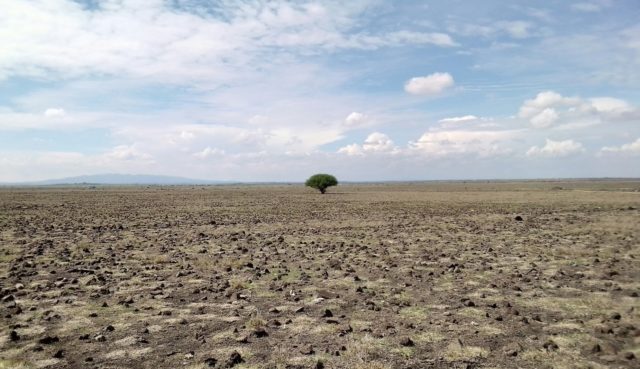News & Insights
Understanding the legal sector’s role in climate and nature action

Over the past 10 months, we’ve conducted exploratory research that shares a deeper understanding and mapping of the legal sector’s role in climate and nature action.
We hoped to better understand its role, potential and power in decarbonising the global economy and achieving nature-positive outcomes, so you can too. The research has also allowed us to identify gaps across the field that may be interesting for further research and opportunities to strengthen existing interventions, and even develop new ones.
In this three-part blog series, we share our research into the role of the business of law in driving climate and nature action, and what we learned about vocational education, development training and professional regulation along the way. We also share our latest plans and thinking around developing educational resources for our users, so they feel more confident using climate clauses in their everyday work.
This research project, initiated in late 2023, was brought to fruition in 2024 through the collaborative efforts of Humzah Khan and Guillermo Miranda Garcia. Guillermo joined our team at the beginning of the year, bringing his experience in legal entrepreneurship and corporate governance to the project. Their collaborative efforts have been instrumental in conducting interviews, synthesising our findings, and drawing meaningful conclusions from the data collected.
Introduction
The role of the legal sector in driving meaningful action has never been more crucial. We know what climate laws do, and what they don’t do. We also know about the use of strategic litigation, and what this response to the climate crisis lacks too. We know less about what’s happening across the business of law. In other words, the advisory and transactional work that drives global economic activity.
We recently led an exploratory research project to better understand the activities happening in this space and to identify interventions needed to ensure more coordinated and effective action. This short article outlines what we learned about what role the business of law plays in driving climate and nature action, and the key problems limiting the legal sector from realising its transformative potential to deliver systemic change.
The questions we hoped to find answers to
A good discovery project means asking the right research questions. We aimed to find out:
- What are the systemic problems with the legal sector that prevent or restrict change across the profession?
- Who is already addressing the change needed within the sector?
The framing of the two questions above helped us identify a series of problem statements, and provided the ability to map existing activities and actors against those problems. We believed this would, in theory, give us a high-level indication of where action is taking place, and where it isn’t.
This approach would also help us identify potential leverage points where targeted interventions could have the most significant impact on aligning the legal sector with climate and nature action goals.
The questions we asked research participants

Through a mix of semi-structured interviews, roundtable discussions, and a survey, led by leading barrister Margherita Cornaglia, we asked research participants:
- What is the work you are doing to transform and align the law with positive action on climate and nature?
- What are the biggest problems you are facing in the work you described above?
- What, if any, solutions to these problems exist?
- Who else do you work with to transform law?
- Who do you think should be working to transform law, who isn’t currently doing so?
We spoke to a range of people working in the law and climate and nature ecosystem. This included 30 research participants in total, from lawyers to academics to non-profits. The diversity of perspectives we gathered provided a robust foundation for understanding the current landscape and identifying key areas for improvement.
The problems we identified
We created a series of problem statements. We identified more than 70 in total before narrowing down to 36, mostly because they were similar to each other.
Examples include
“Private practice lawyers lack understanding and dedicated training on climate-related issues. This affects their confidence when advising clients on them.”
“Law firms have limited understanding of biodiversity risk because it’s new and not yet integrated into mainstream law.”
“There is a lack of engagement by company boards on climate. This slows how quickly a company decarbonises its business.”
“Raising funding for climate and legal-related initiatives is time-consuming and difficult.”
We identified a range of actors across a spectrum, from law firm collaborations, to organisations working directly with c-suite executives, to those focussed on accountability and activism.
We categorised our problem statements into all of the following themes:
- Education and training
- Professional regulation
- Legal and corporate culture
- Legislation
- Funding
Limitations in each of education and training, professional regulation and legal and corporate culture featured the most often. While we know the majority of problems related to these dominant themes, another limiting factor in the research is it tells us less about why the problems exist, and how they manifest in different users’ experience of the business of law.
Where our research left us
Our findings allowed us to build hypotheses that education, training, regulation and legal and corporate culture, both individually and as interconnected systems, were significant problem areas restricting the legal sector from driving meaningful change. These findings suggest that addressing these interconnected issues could create a ripple effect, potentially transforming how the legal sector engages with and influences climate and nature action.
To understand these areas more deeply, we took our research to the next stage. This involved visualising our understanding of them on a map, identifying problems, opportunities and solutions that already exist.
As we move forward, we invite legal professionals, policymakers, and other stakeholders to engage with our findings and contribute to the ongoing dialogue on how the legal sector can more effectively drive climate and nature action.
“Our research uncovered a significant opportunity for the legal sector to drive systemic change in climate action. By bridging gaps in education and professional training, we can equip legal professionals with the tools to become powerful advocates for a sustainable future.”
Guillermo Miranda Garcia
We will share what we learned about vocational education, professional training and regulation in the next blog, including a downloadable version of our systems map.

